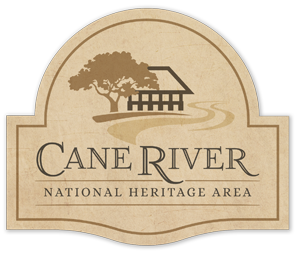During the colonial era, it was culturally acceptable for planters to enter into lengthy relationships with enslaved Africans and American Indians, despite French and Spanish legal bans on racial mixing. This practice continued throughout the antebellum period. The children of these relationships were often granted their freedom, forming an influential class of people who blended aspects of French, Spanish, African, and American Indian cultures. Many of the "gens de couleur libres" - "free people of color" - became successful planters in their own right. The decendents of these people in the Cane River region are known today as Cane River Creoles.
The Cane River Creole community was established in the late 1700's by the freed slave Marie Thérèse Coin-Coin and her descendents. She and her children carved out a succesful agricultural venture, owning their own slaves and gradually acquiring more land. This community founded its own churches, schools, businesses, and places of entertainment.
Today, St. Augustine Catholic Church is the spiritual center and heart of the community known as Isle Brevelle. The Creole traditions and practices of the Isle Brevelle community extend beyond attending church services on Sunday. Instead, the close-knit community gathers for fairs, trail rides, candlelight vigils, and plays. Music, dancing, and storytelling are also features at almost every gathering of Creole people.
Another important aspect of the Isle Brevelle community is the cuisine and food traditions. Many of the recipes have been passed down through generations of Creole families. From the garden to the kitchen, Creole cuisine has played an integral part in church, community, and family activities on Cane River.











